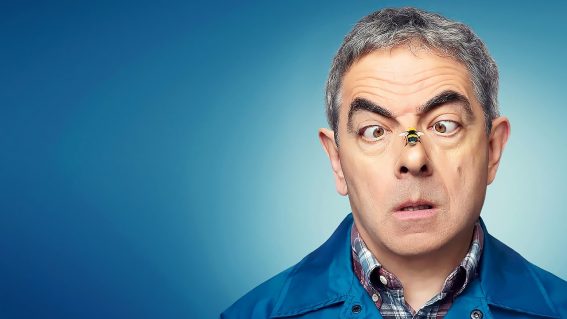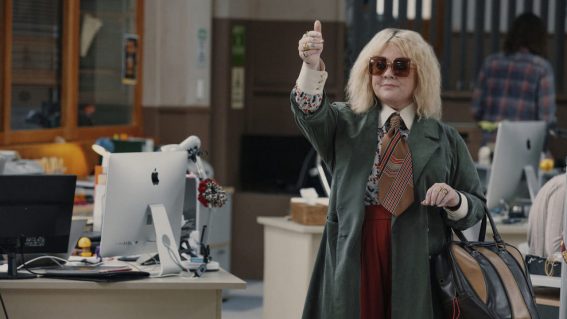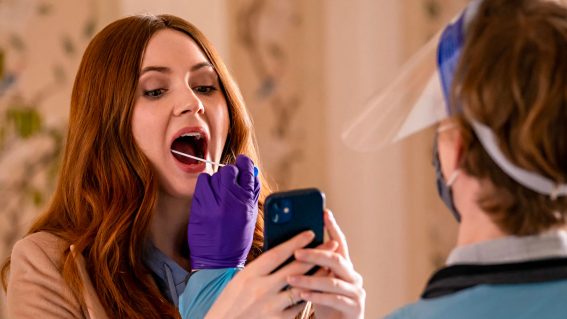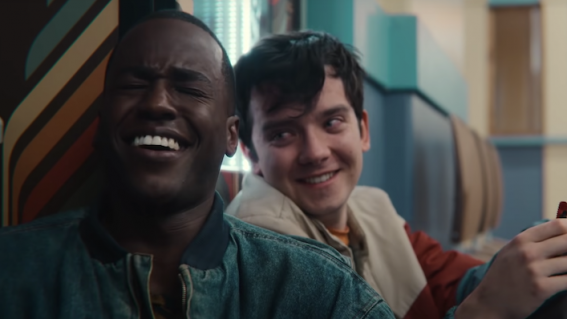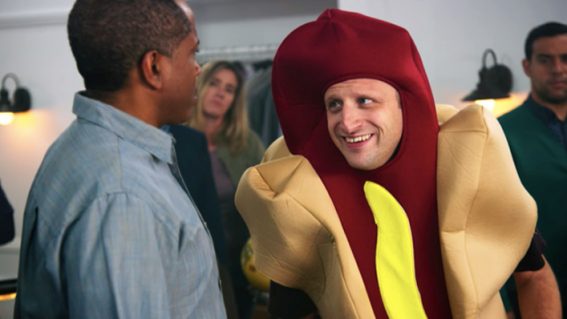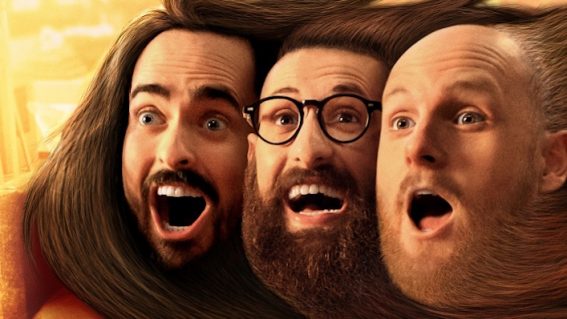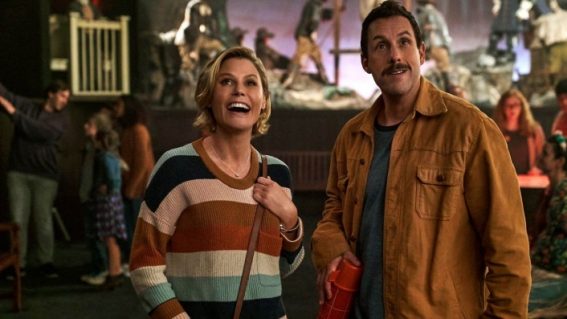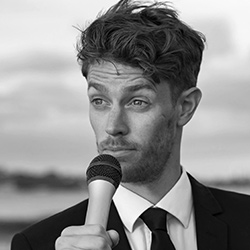The twisted genius of Aunty Donna’s Big Ol’ House of Fun
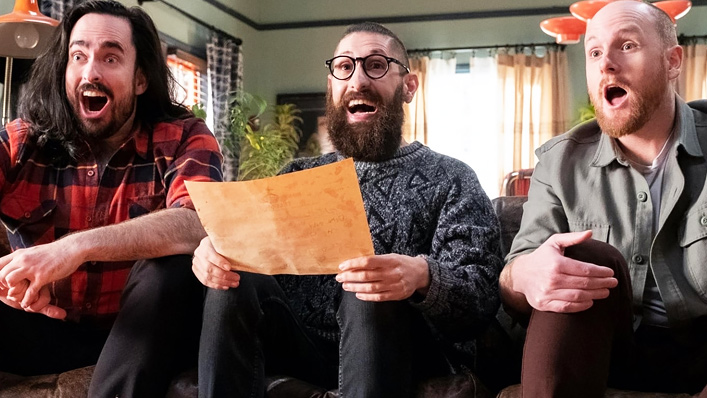
Rambunctious Australian comedy troupe Aunty Donna have a brand spankin’ new Netflix series—and it’s a hoot. Critic Luke Buckmaster explores the group’s gloriously absurd humour.
A shared house is a fitting setting for Aunty Donna’s new Netflix series, given a suburban abode rented by three weird blokes has an ‘anything goes’ vibe conducive to their style. That’s not to say the Australian comedy troupe—comprising actor/comedians Mark Samual Bonanno, Broden Kelly and Zach Ruane, plus, behind the scenes, Sam Lingham, Max Miller and Thomas Armstrong—have a particular interest in this central location, narratively or thematically, or even want to say anything at all about shared house living.
See also
* Best new movies & series on Netflix
* All new streaming movies & series
The social media sensations are sketch comedians, so they’re drawn to simple features for their vaudevillian possibilities: a doorbell for instance can summon any number of zany characters. And the couch and kitchen table are like town squares, where people with a lot of not much on their minds—i.e. Mark, Broden and Zach—are thrown into various conversational and situational wormholes.
One of them, in the second episode, involves Zach following the instructions of a daytime TV host (supposedly Ellen DeGeneres—played by Mark) who beckons him to go outside, where he is overjoyed to discover a brand new Toyota Corolla. Ellen then asks him to enter the car and retrieve the contents of the glove department, which is $10,000 in cash. Then the requests get more extreme: get on a plane, pick up a bag of blood diamonds, cross the Cambodian border, shoot the guy in the van following you, pick up a magical orb, enter a wormhole…
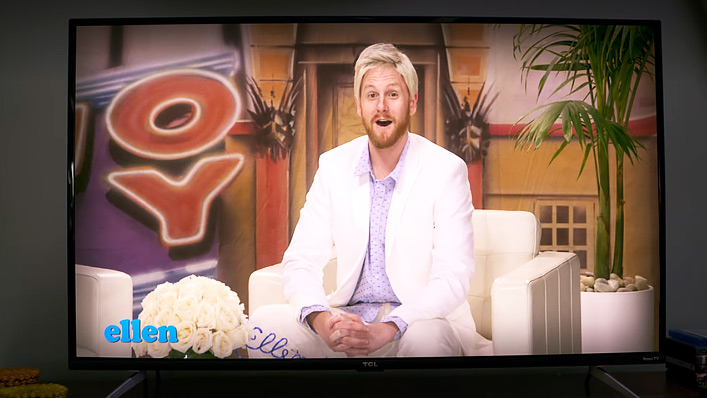
The scene remains inside, with Mark perched in front of the TV listening to Ellen’s instructions and Zach’s excitable responses, while the situation spirals into an outrageous Rick and Morty-like journey across the the space/time continuum. Like most of their sketches it’s very funny, and has an optional subtext if you scrounge around for it: in this instance skewering the blind faith audiences place in television personalities.
The humour throughout Aunty Donna’s very funny and moreish show—a six episode (20 minutes each) series executive produced by Ed Helms—is random and absurd, but there are precedents. The influence of Douglas Adams’ literary inventions cannot be underestimated: particularly his Infinite Probability Drive, which supposes that in an infinite universe anything, however improbable, is inevitable. Also productions such as Rick and Morty and Spider-Man: Into the Spider-Verse, as well as the broader movement to which they belong, which I wrote about a couple of years ago.
I pegged it with the spiffy-sounding label “multi-dimensional modernism,” and reflected that this movement goes “beyond postmodernism (the so-called ‘culture of quotations’) and intertextuality (the relationship between texts) into a narrative space incorporating multi-dimensional elements.” Aunty Donna is an addition to this genre, even if the aforementioned label risks sounding a little intellectual for a group that make regular dick and fart jokes, and a series that begins with them banging their butts and groins to generate the sounds of a drum (a reprisal of an old song).
I mentioned animated productions in particular because Aunty Donna’s Big Ol’ House of Fun—and Aunty Donna more generally—has the vibe of a comic strip or a cartoon, bastardized into live action. An obvious example of its cartoony-ness arrives 11 minutes into the first episode, when the trio visit a printing place and a thought bubble appears above Zach’s head. A version of himself inside the bubble says “don’t worry Zach—things might be looking kind of glum now, but they’ll be right as rain in no time!”
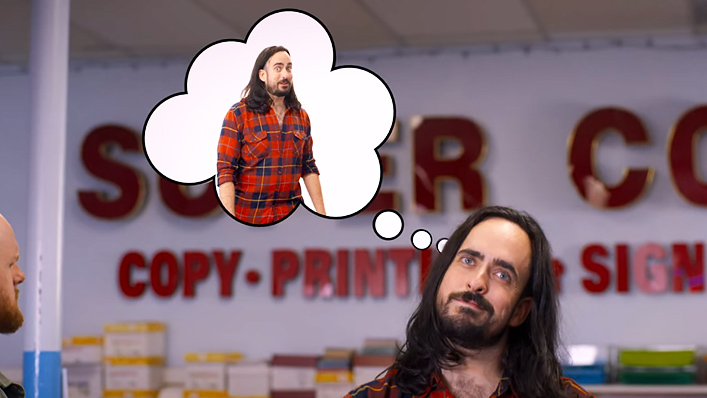
Instead of that thought bubble existing in visual terms only for the audience—its purpose to reveal the things going through Zach’s mind—it has entered the series’ root reality. Mark and Broden are beside themselves (“WHAT IS THAT?….THE FUCKIN’ THING ON YOUR FACE!”), and the latter reacts by grabbing a pair of snippers and slicing through one of the dots below the bubble. This doesn’t end well, causing blood to spray out of Zach’s head like water from a burst main.
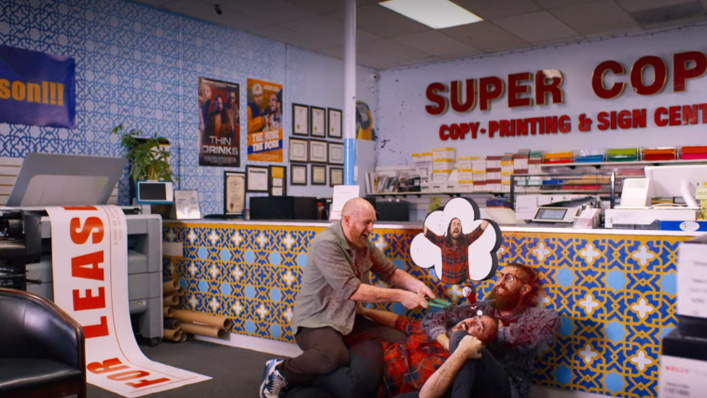
Like the “you’re in low res” gag, which was given prominent placement in the trailer, this joke draws on the tension between the real world and a component dropped in from somewhere else—from another reality; another kind of representation. This element belongs to a wider system of images (the language and syntax of comic strips) but has been plonked into a world in which it does not belong—a fish out of water setup, with the fish a form rather than a character.
Another way of looking at the troupe’s absurd antics is through the prism of their surreal qualities. I can’t help but drop the word Buñuelian here—a word that corresponds to one of my favourite filmmakers, the great Spanish director Luis Buñuel, whose oeuvre is synonymous with (in academic parlance) avant-garde surrealism, and, in common parlance, is pretty bloody trippy. In his work and in Donna’s, serious treatment of illogical situations feeds into the idea that a core function of motion pictures is to reflect the state of dreams.
A talking dishwasher? A game show in which participants constantly deliver inexplicably awful answers? That bit with Ellen Degeneres? The Aunty Donna boys are channelling Buñuelian ideas, whether they’re conscious of it or not. Big Ol’ House of Fun is a sketch comedy show, so the structure is not and cannot be consistent—but the hits outweigh the misses, that’s for sure. Once you’ve smashed through this series check out the troupe’s YouTube page, if you haven’t already.


